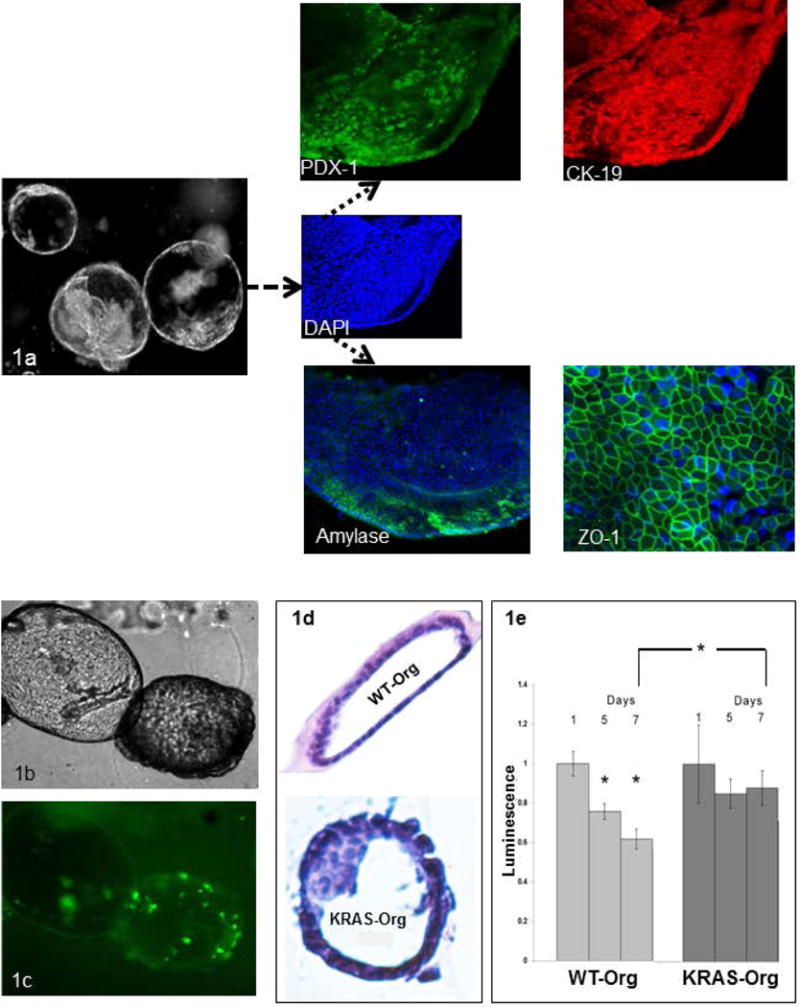Figure 1.

Pancreas organoids retain the characteristics of the tissue of their origin, and show neoplastic changes and increased survival upon transfection with KRAS mutation; (a) Morphology of day 21 organoids on the left; higher magnification image of one organoid; inset, stained with DAPI (blue), PDX1/green, CK19/red, acinar marker (Amylase/green) and tight junction protein (ZO-1/green); (b) Morphology of the transfected pancreatic organoids with human KRASG12D mutation-carrying vector 10 days after transfection (c) tagged with GFP; (d) H&E staining of a wild-type (WT) organoid compared to mutated KRAS carrying organoid with enlarged, disorganized, crowded and hyperchromatic nuclei along with multilayering of cells, neoplastic changes typically preceding frank invasive carcinoma (ie, features of pancreatic intraepithelial neoplasia).; (e) Cell viability in WT and mutated KRAS carrying organoids at day 5 and 7 days compared to day 1, bar graphs show means ± SE of n=3 experiments, asterisk indicates p<0.05.
